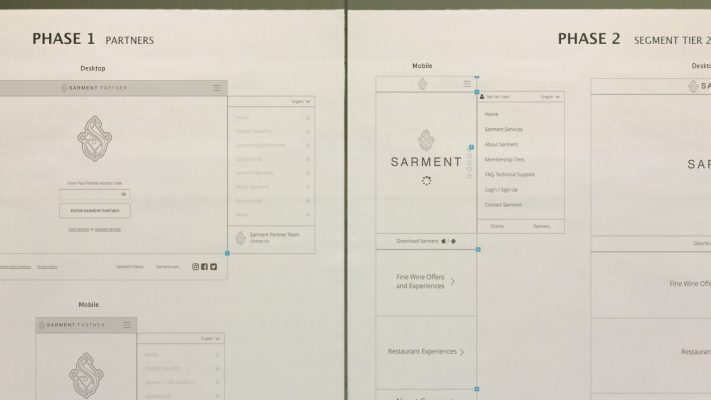
information architecture and interaction design
Background
The first rule of Sarment is … Sarment is an exclusive wine & spirits retailer and service provider. Access to the online shop requires a minimum spend. Sarment services are only available to a select elite.
The challenge
Structure information and content of Sarment’s website for individual user groups.
- Define information architecture and functionality of the website.
- Increase visitor to customer conversion.
Discovery
Due to Sarment’s exclusive nature, competitive research was virtually impossible and business information was provided by account managers instead. Research consisted of:
- A content audit.
- Interviews with account managers.
- User segmentation.
User segmentation
Segments were created to better understand users’ needs and aspirations.
- What are they influenced by?
- What are cultural prerequisites?
- What image are they trying to project?
Personas
User segments were represented by a personas, with a focus on:
- Members (top tier, a select few)
- Retail members (second tier, by minimum spend)
- Potential new members

Ideation
Brainstorming, card sorting experiments and content mapping sessions with producer, UI designer and tech lead shaped a combined understanding of how to lay out the information and create the underlying content strategy.

Information Architecture
Ecosystem and user flows were created to help define the website’s information architecture to meet business and customer needs.

Delivery
The information architecture of the website and content of individual pages was designed, wireframes turned into responsive prototypes and tested by the wider team.